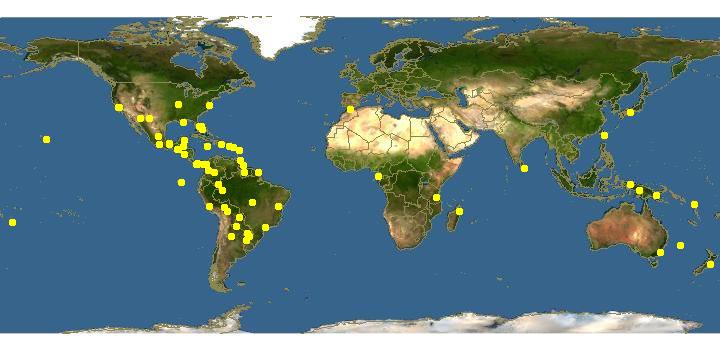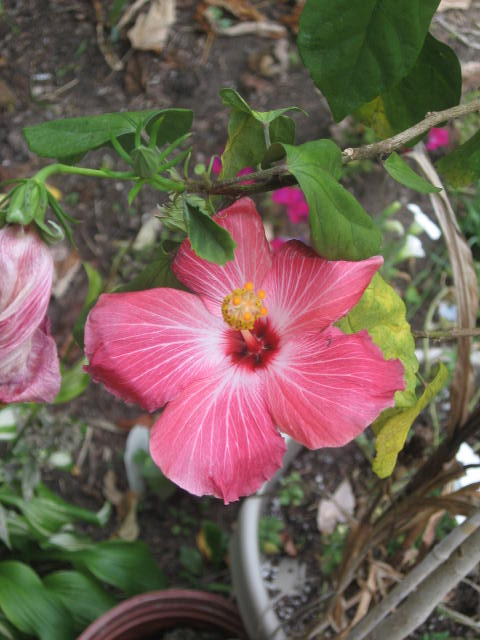HabitatHabitat
The Hibiscus rosa-sinensis can be found anywhere! It
grows on its own in sub-tropic and tropic regions of the world,
ranging from 30 degrees north latitude to 30 degrees south
latitude. Another organism that grows in the tropical regions is
Piper nigrum (Black Pepper) and
Morinda citrifolia
(the Noni).
The plant however can be grown in pots in regions that do not
fit into this category. The Hibiscus rosa- sinensis is
a common house plant in places such as Europe and the United
States of America. The Hibiscus rosa- sinensis cannot
live in regions that reach temperatures lower than 12 degrees
Celsius or approximately 56 degrees Farhenheit. The Hibiscus
rosa- sinensis
grows in regions in the United States that are in the growing
zones 9 through 11, which includes the regions of southern
Texas, Florida, Hawaii, and southern California. Even though the
plants will succeed in these regions, the plants may still be
needed to be brought in as house plants or covered up for winter
if there is a potential frost.

There may be some competition in the niche that the
Hibiscus rosa- sinensis occupies. The
Hibiscus rosa- sinensis is a plant that has secondary
growth, meaning that it grows out instead of up. This may cause
a problem for other plants in the niche.
 They
may have to compete for space, nutrients, and sunlight with the
Hibiscus rosa- sinensis. The plant may deprive many
young trees from having the ability to develop in the tropical
regions because the Hibiscus rosa-sinensis spreads
anywhere from five to eight feet in width making it hard for the
young trees to establish a root system. However, the
Hibiscus rosa-sinensis may benefit some forms of ground
cover that require shade to successfully grow. The prevalence of
the Hibiscus rosa-sinensis
may affect the carrying capacity on organisms such as the
aphids, mites, and whiteflies. Even though whiteflies, aphids,
and mites feed on other organisms, the decrease in population of
the Hibiscus rosa- sinensis will affect these
organisms drastically. If there is decrease in the Hibiscus
rosa-sinensis
when there is a relatively high population of these organisms it
can lead to a major die off of the organism.
They
may have to compete for space, nutrients, and sunlight with the
Hibiscus rosa- sinensis. The plant may deprive many
young trees from having the ability to develop in the tropical
regions because the Hibiscus rosa-sinensis spreads
anywhere from five to eight feet in width making it hard for the
young trees to establish a root system. However, the
Hibiscus rosa-sinensis may benefit some forms of ground
cover that require shade to successfully grow. The prevalence of
the Hibiscus rosa-sinensis
may affect the carrying capacity on organisms such as the
aphids, mites, and whiteflies. Even though whiteflies, aphids,
and mites feed on other organisms, the decrease in population of
the Hibiscus rosa- sinensis will affect these
organisms drastically. If there is decrease in the Hibiscus
rosa-sinensis
when there is a relatively high population of these organisms it
can lead to a major die off of the organism.
To go to the adaptation page click here!
To go back home click here!